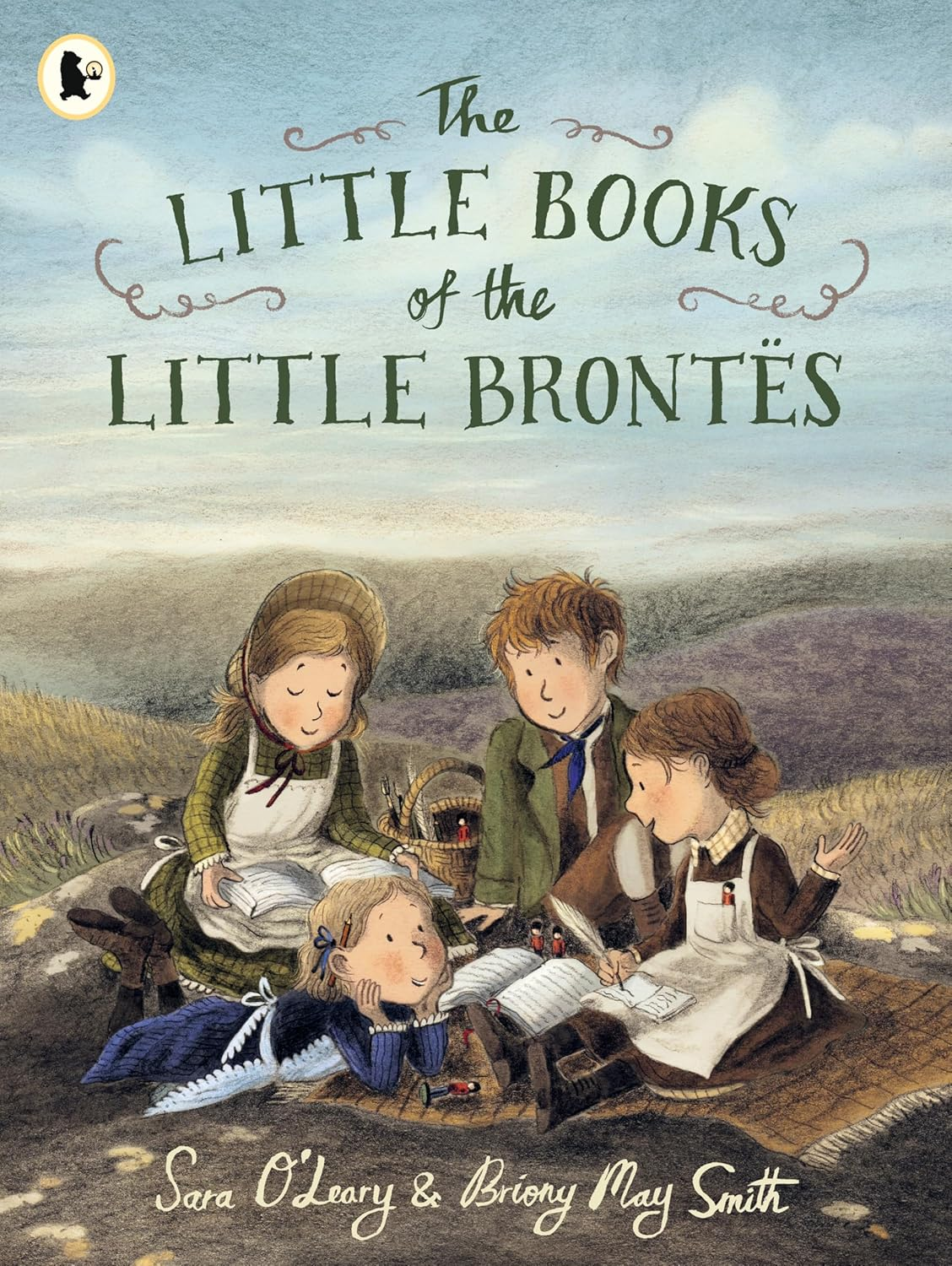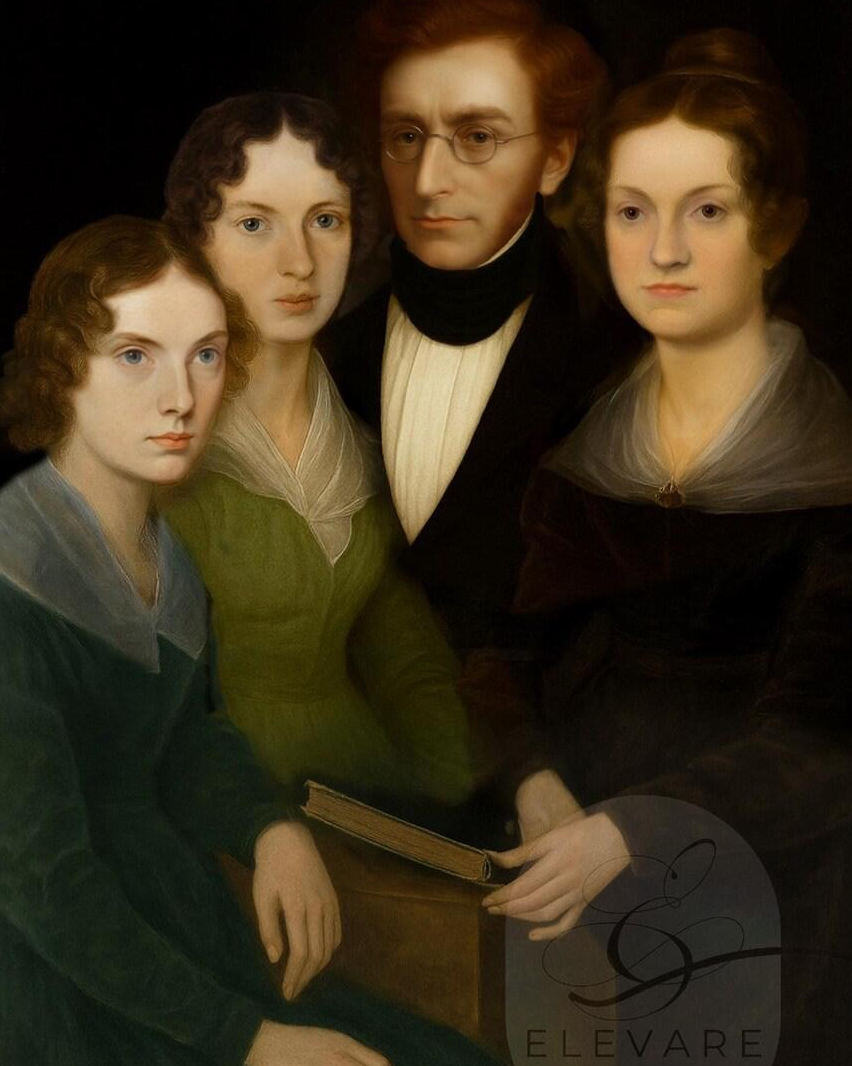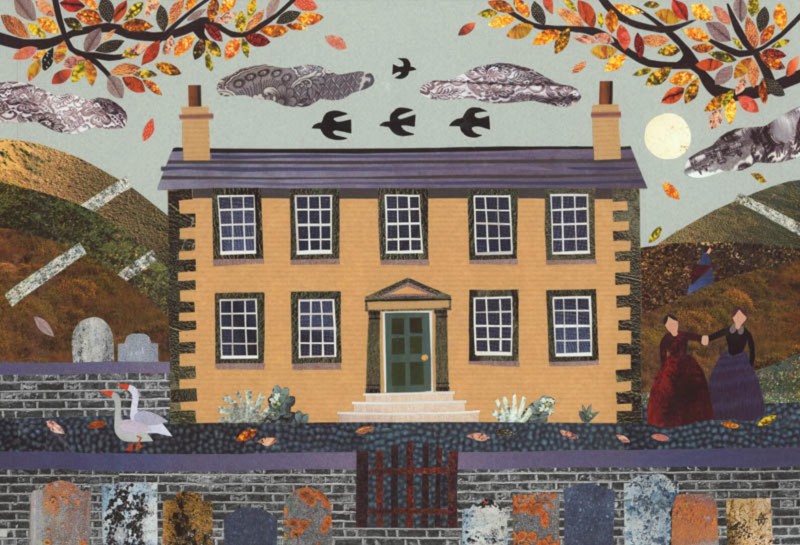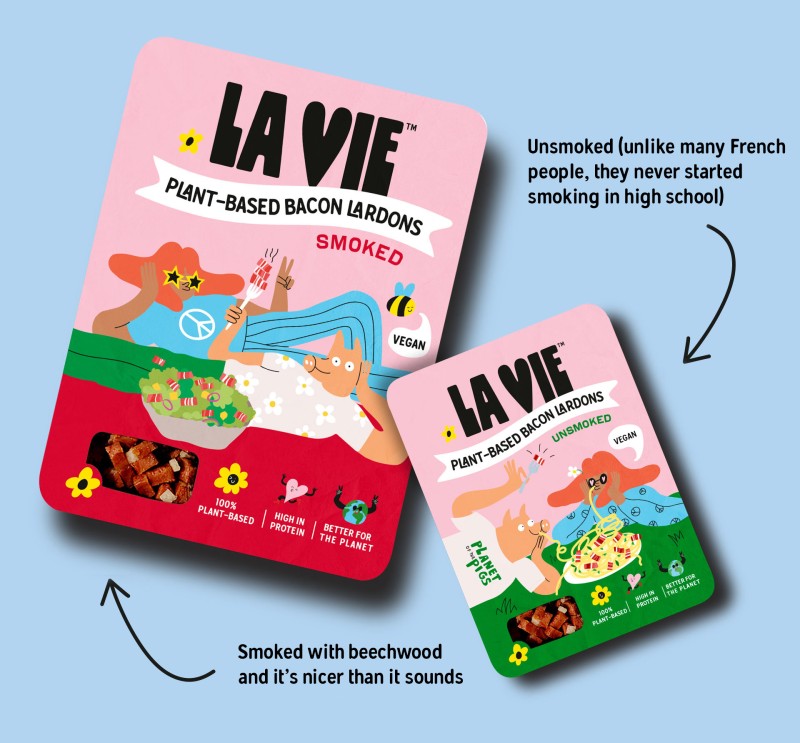History of the Brontës (four literary siblings)

Everyone has heard of the Brontë siblings. There were three sisters (Charlotte, Emily and Anne) who between them wrote some of our most loved novels in history, plus a brother Branwell, who was also a writer.
The Early Lives of the Brontë Siblings

All four siblings died very young, from a family blighted by tragedy. They grew up in the Yorkshire hill village of Haworth, their father the local vicar at the parsonage. Patrick was Irish-born with strong views, and a love of books. His wife Maria died in 1821, leaving six children. Two other children (Maria and Elizabeth) died young.
The parsonage was close to the Yorkshire Moors, with the sisters often walking the paths in all weathers. Their aunt Elizabeth Branwell soon moved in to help raise the girls, and fed their heads with books and literature.
The Yorkshire Village of Haworth

The village of Haworth is now a popular tourism town, and the former family home a museum. It’s a pretty place but (like Wordsworth’s Grasmere in Cumbra), the local tourist board have gone a bit gimmicky, to trade on the name. You can go ‘where Heathcliff and Cathy’ embraced etc.
Most of the indie shops that existed in this Pennine village (just 10 miles from Bradford) have now gone. To be replaced by souvenir shops, and the buildings are mostly holiday lets for foreign tourists on the literature trail.
Famous Works in Brontë Literature

Sales were not good when the Brontë sisters first published their books, mostly as poetry. But soon each sister wrote a book, that catapulted them into literary giants:
Charlotte Brontë’s Jane Eyre: A Story of Strength
Jane Eyre is the story of an orphan, who refuses to bow to injustice. She becomes a governess, and falls in love with Mr Rochester. And when faced with a secret that makes her future with him impossible, she chooses dignity and self-respect.
Emily Brontë’s Wuthering Heights: Wild Passion and Darkness
This novel (covered in a song by Kate Bush) is a dark and broody love story, which shocked Victorians, when first published. It looked at how class, being orphaned and abuse, shape someone’s character.
Anne Brontë’s Realistic Portraits of Society
Agnes Grey gives a clear look at governess life. The main character faces spoiled children, petty employers, and the thin line between genteel poverty and dignity. The prose is spare, the scenes exact, and the message plain. Work for women was fraught and often thankless.
Anne’s other main book The Tenant of Wildfell Hall was even more dramatic. Helen leaves an abusive, alcoholic husband to protect her child. She supports herself by painting, guards her privacy, and tells her story with strict honesty. This bold portrait of a Victorian marriage again was very brave at the time, telling of a woman’s right to refuse harm.
The Sad Early Deaths of the Brontë Siblings

Branwell was also a talented talented writer (and painter). But his life did not fare so well professionally. He drifted between jobs, supporting himself through painting portraits. But he was addicted to alcohol and drugs, and after a failed relationship, he died at just 31 (mostly likely due to TB, made worse by other illnesses).
Emily died age 30, just 4 months after her brother, again from TB complications, from catching a cold at her brother’s funeral. Anne was just 29 when she died, and again had TB.
Charlotte died at 38, who lived with her blind and ill father. She did eventually marry, but died 9 months later (again from TB combined with extreme nausea from pregnancy, which led her not being able to eat or drink properly. She was just 3 weeks from her 39th birthday.






